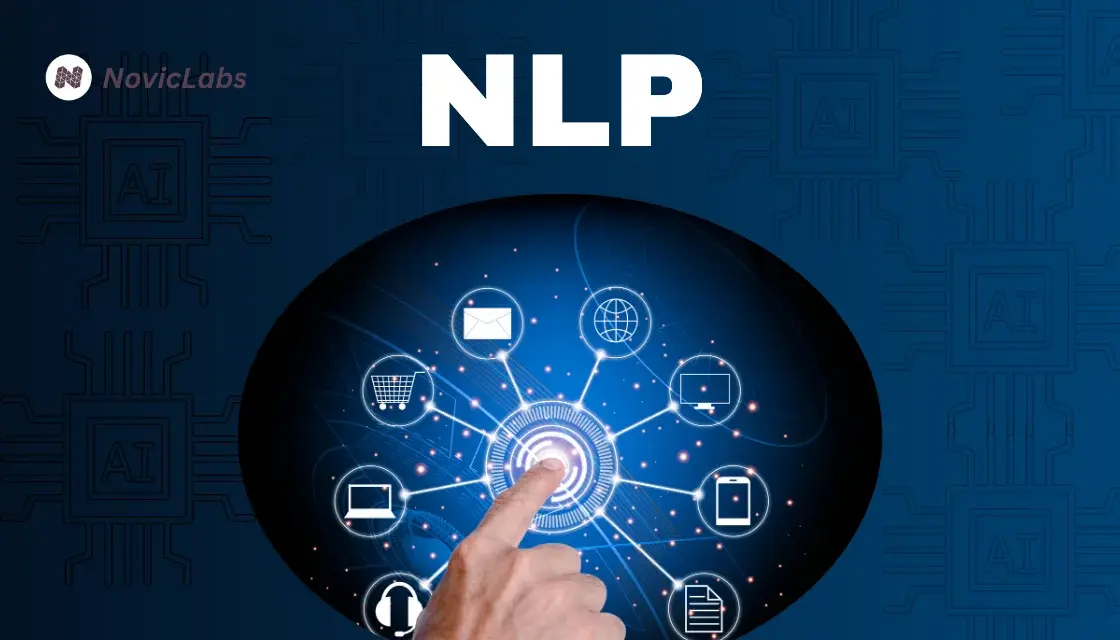Jul 20, 2022
NLP Explained: What It Is and How It Works
Ever wondered how your phone understands voice commands or how chatbots answer your questions so naturally? That’s the power of Natural Language Processing (NLP)—a captivating area of artificial intelligence (AI) that allows computers to comprehend, analyze, and produce human language, making communication between humans and machines more seamless.
In this guide, we’ll break down NLP in a simple, beginner-friendly way, covering what it is, how it works, real-world applications, and why it matters today more than ever.

What is NLP (Natural Language Processing)?
Natural Language Processing (NLP) is a branch of AI that deals with how computers interact with human languages. It allows machines to interpret, understand, and generate text or speech in a way that mimics natural human communication, making interactions feel more intuitive and human-like.
In simple terms, NLP allows machines to “read” language just like we do—whether it's translating text, summarizing an article, or answering a question.
How Does NLP Work?
NLP fundamentally operates by examining both the structure and meaning of language, blending concepts from linguistics, computer science, and machine learning.
Here’s a simplified overview of the process:
1. Text Preprocessing
This step prepares raw language data for analysis:
Tokenization: Splitting text into words or sentences.
Stop Word Removal: Removing common but unnecessary words like the, is, or and.
Stemming/Lemmatization: Reducing words to their base or root form
art-of-Speech Tagging: Identifying nouns, verbs, adjectives, etc.
2. Understanding Language Structure
NLP systems analyze grammar, context, and syntax to understand how words relate to each other in a sentence.
3. Applying Machine Learning Models
Machine learning algorithms are trained to recognize patterns in language data and generate predictions accordingly. Models like decision trees, neural networks, or transformers (e.g., BERT, GPT) help in processing and understanding context.
Real-World Applications of NLP
Natural Language Processing is already reshaping our daily lives and professional environments. Here are some everyday applications:
1. Virtual Assistants
Voice assistants like Siri, Alexa, and Google Assistant depend heavily on NLP to interpret and respond to spoken commands.
2. Chatbots & Customer Service
Many websites now use AI-powered chatbots to assist customers 24/7, interpreting questions and providing real-time support.
3. Language Translation
Tools like Google Translate use NLP to convert one language to another accurately and efficiently.
4. Sentiment Analysis
Businesses use NLP to analyze customer feedback, reviews, or social media mentions to understand public sentiment.
5. Email Filtering & Spam Detection
Your email inbox uses NLP to detect spam or categorize messages intelligently.
6. Text Summarization
Automatically creating short summaries of long texts—ideal for news apps or research articles.
7. Speech Recognition
Converts spoken language into text, which is useful in transcription services and voice typing.
Conclusion
Natural Language Processing is transforming how we engage with technology. From virtual assistants to sophisticated translation services, NLP is becoming a part of everyday life. As AI continues to evolve, understanding and leveraging NLP will be crucial for businesses, developers, and everyday users alike.
Whether you're just curious or planning to integrate NLP into your solutions, this guide gives you a solid foundation to start exploring the potential of this powerful AI technology.
STREAMLINE YOUR BUSINESS WITH AI?
Main
Resources
Developers
Company
Contact Us
+1 (999) 888-77-66
hello@noviclabs.com
Location
483920, Indonesia,
Lampung 22/2/5, Office 4
© 2023 Noviclabs All rights reserved.